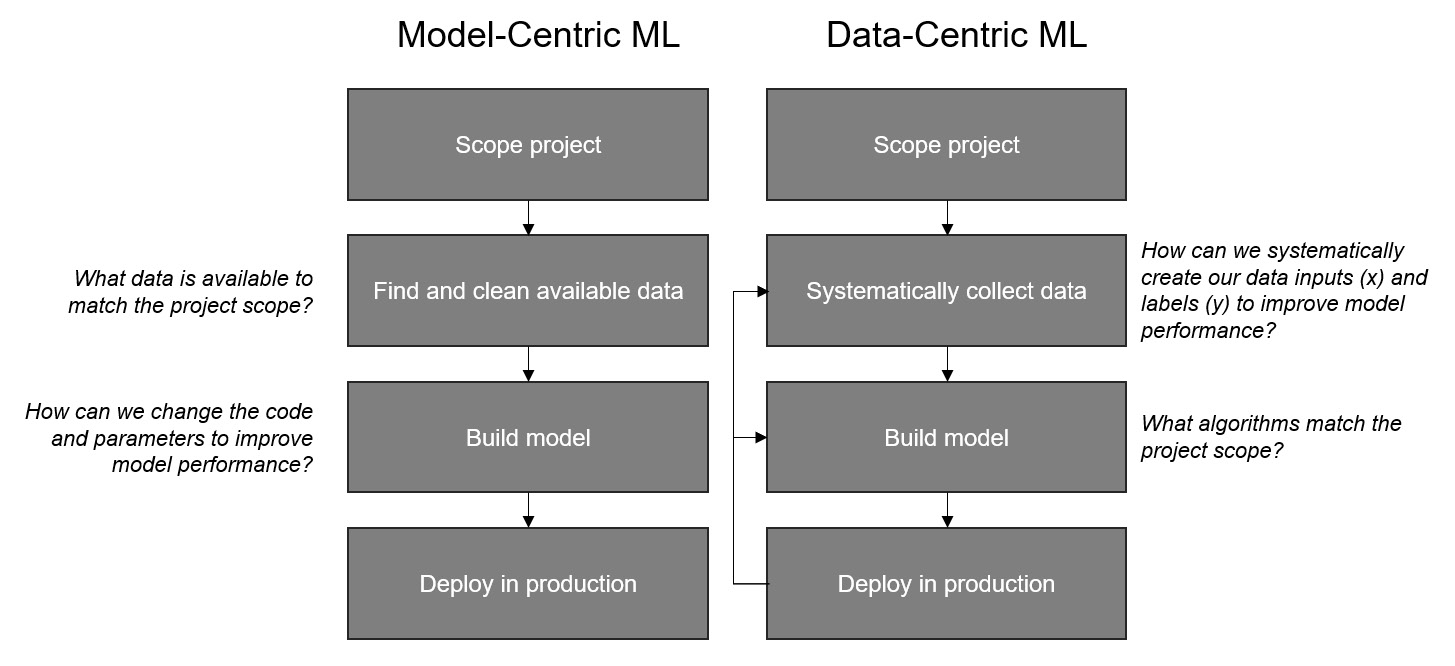Exploring Data-Centric Machine Learning
This chapter provides a foundational understanding of what data-centric machine learning (ML) is. We will also contrast data centricity with model centricity and compare the performance of the two approaches, using practical examples to illustrate key points. Through these practical examples, you will gain a strong appreciation for the potential of data centricity.
In this chapter, we will cover the following main topics:
- Understanding data-centric ML
- Data-centric versus model-centric ML
- The importance of quality data in ML


